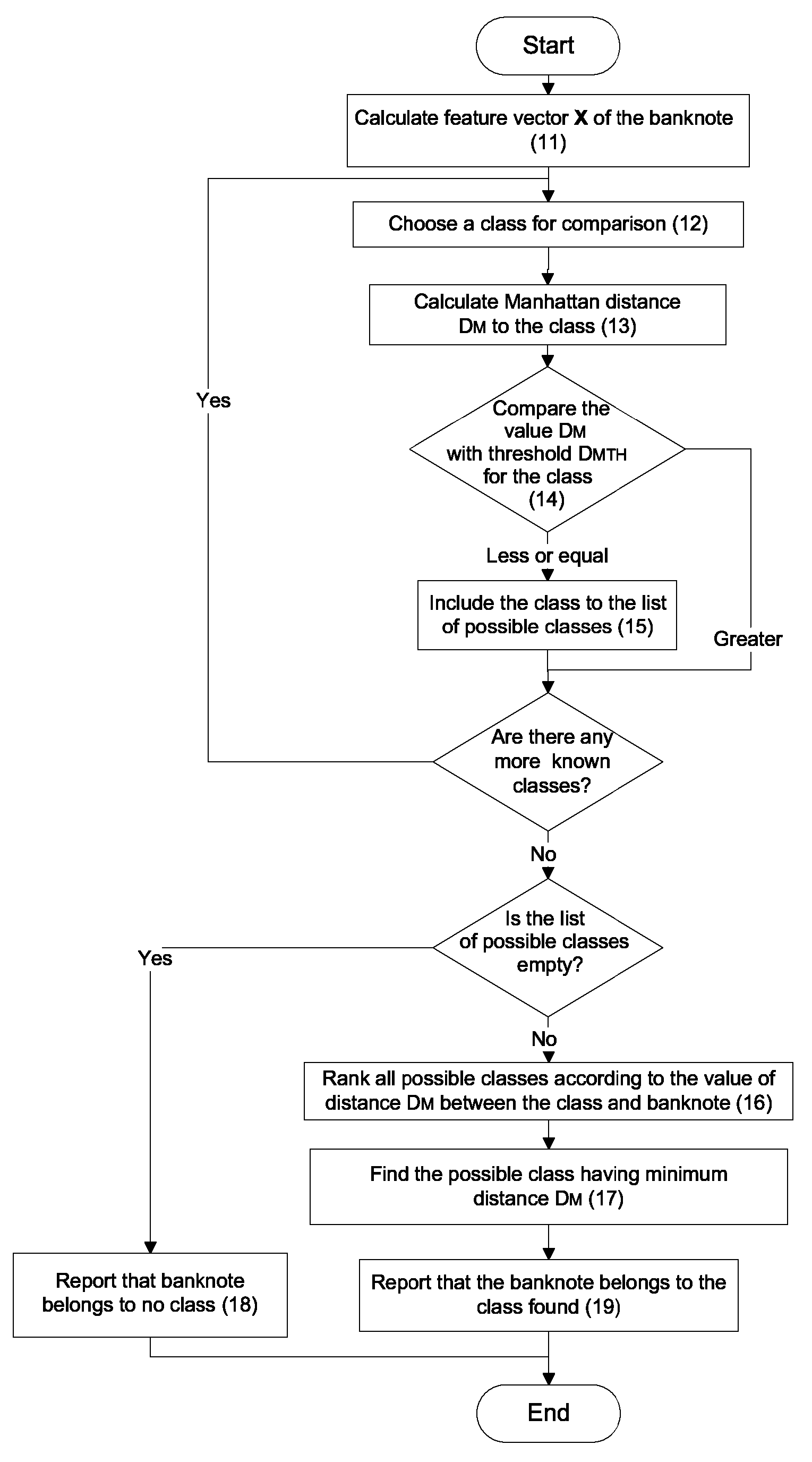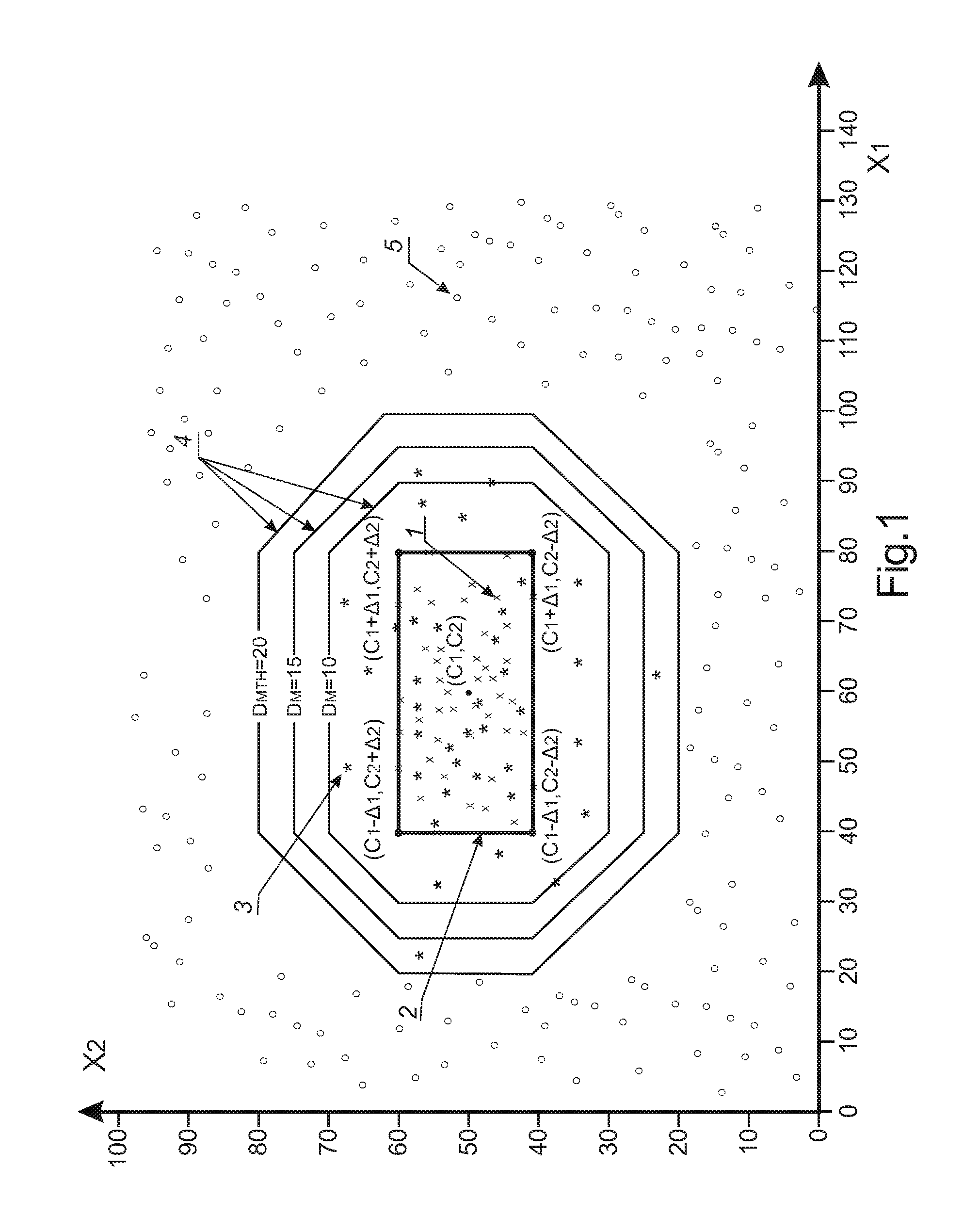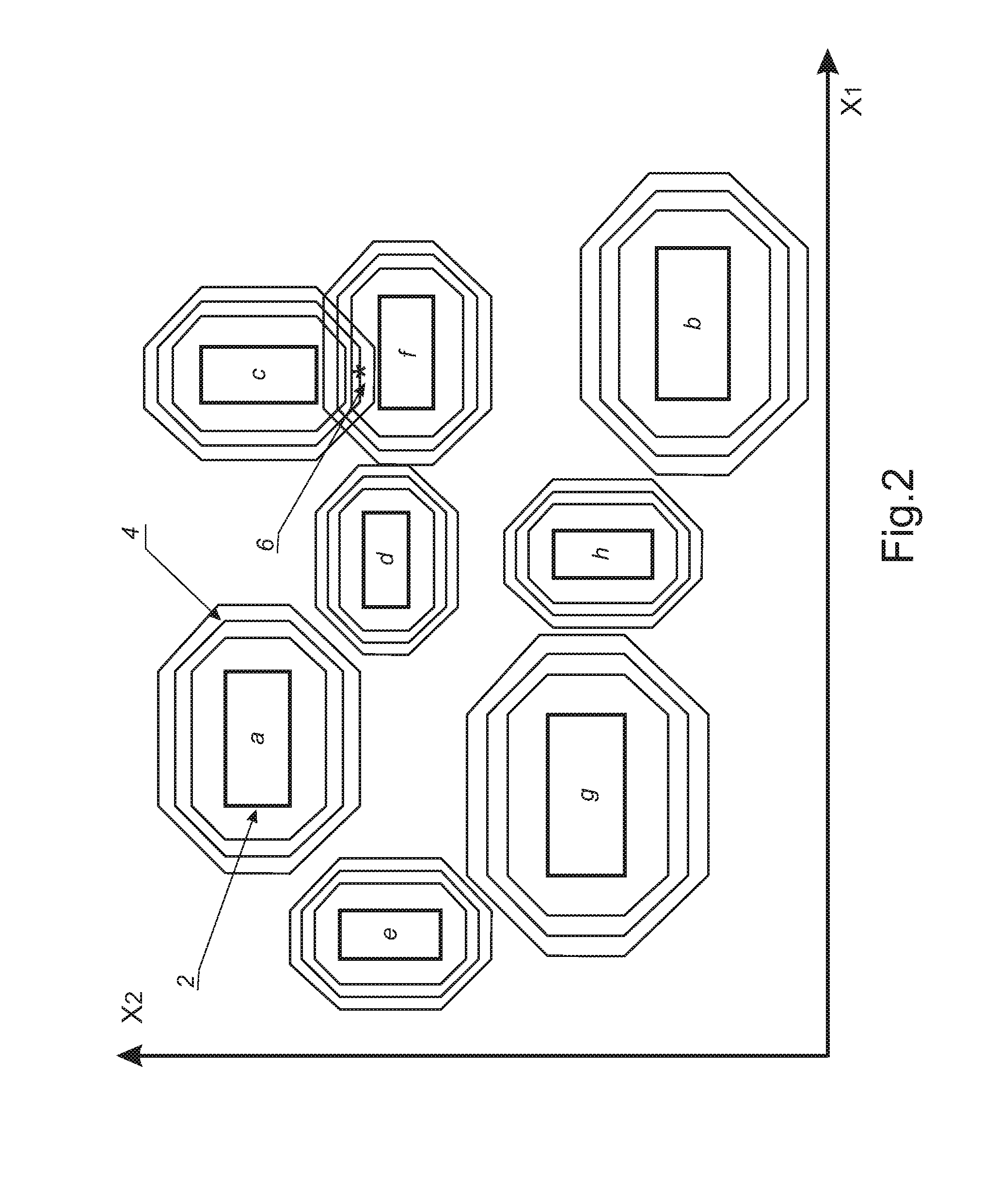Method for the classification of banknotes
a banknote and classification technology, applied in the field of banknote classification methods, can solve the problems of high performance computing units, difficult implementation of the known method to develop devices, and serious computational complexity, and achieve the effects of less probability of incorrect classification, complex computationally, and worsening the measure of corresponden
- Summary
- Abstract
- Description
- Claims
- Application Information
AI Technical Summary
Benefits of technology
Problems solved by technology
Method used
Image
Examples
Embodiment Construction
[0044]FIG. 1 and FIG. 2 show calculation of the distance from a banknote to the specified class according to variant 1. For simplicity, a flat rectangular coordinate system with two coordinate axes is used to depict the feature space. In reality, dimensionality n of feature space may reach 100 and more, but it is practically impossible to show it in a drawing. A three-dimensional space is represented with clarity loss, but representation is absolutely impossible for the spaces of a higher dimensionality. Nevertheless, a conclusion drawn for a two-dimensional space, without loss of generality may be extended to a common case of the n-dimensional space.
[0045]Each banknote in the figure is represented by point X=(X1,X2). The class is given by centroid C=(C1,C2) and a vector of allowable deviation Δ=(Δ1,Δ2). These values are determined during analysis of membership in the given class of a large number of banknotes (the so-called training banknote set). Each training banknote 1 in the fi...
PUM
 Login to View More
Login to View More Abstract
Description
Claims
Application Information
 Login to View More
Login to View More - R&D
- Intellectual Property
- Life Sciences
- Materials
- Tech Scout
- Unparalleled Data Quality
- Higher Quality Content
- 60% Fewer Hallucinations
Browse by: Latest US Patents, China's latest patents, Technical Efficacy Thesaurus, Application Domain, Technology Topic, Popular Technical Reports.
© 2025 PatSnap. All rights reserved.Legal|Privacy policy|Modern Slavery Act Transparency Statement|Sitemap|About US| Contact US: help@patsnap.com



